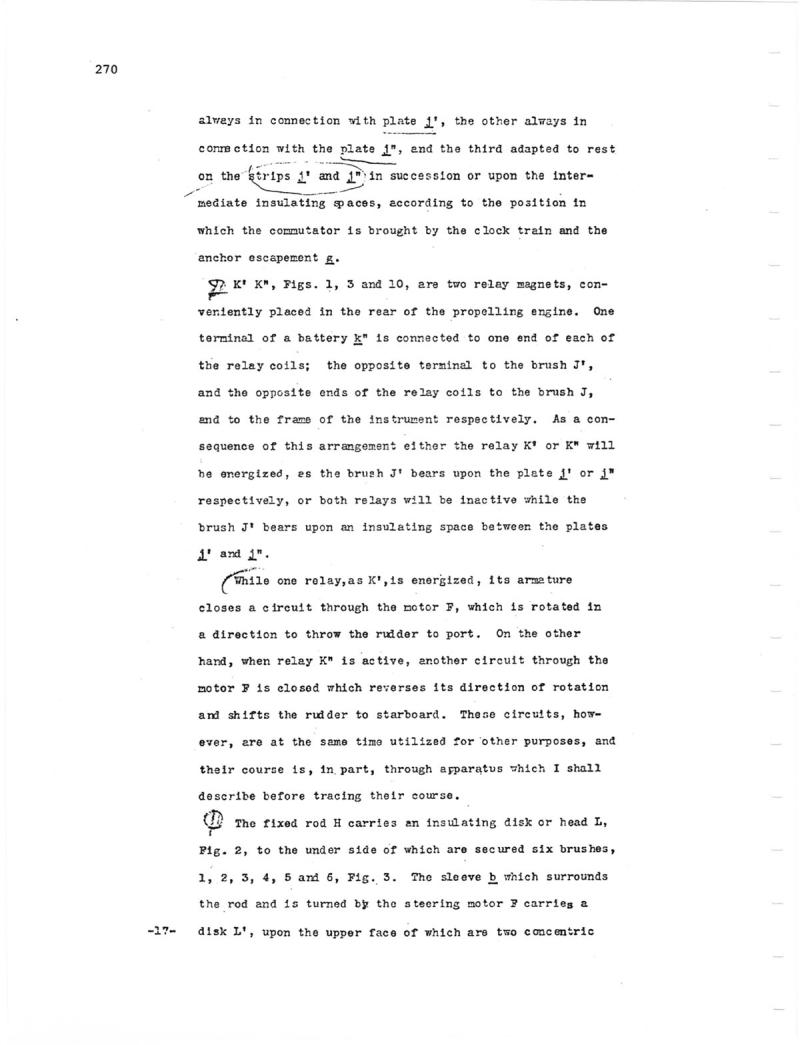
Nikola Tesla Patents
270 -17always in connection with plate i', the other always in connection with the plate i", and the third adapted to rest on the strips i and in succession or upon the intermediate insulating spaces, according to the position in which the commutator is brought by the clock train and the anchor escapement . K' K", Figs. 1, 3 and 10, are two relay magnets, conveniently placed in the rear of the propelling engine. One terminal of a battery k" is connected to one end of each of the relay coils; the opposite terminal to the brush J', and the opposite ends of the relay coils to the brush J, and to the frame of the instrument respectively. sequence of this arrangement either the relay K or K" will he energized, as the brush J' bears upon the plate i' or i" respectively, or both relays will be inactive while the brush J¹ bears upon an insulating space between the plates i' and i". While one relay, as K', is energized, its armature closes a circuit through the motor F, which is rotated in a direction to throw the rudder to port. On the other hand, when relay K" is active, another circuit through the motor F is closed which reverses its direction of rotation and shifts the rudder to starboard. The se circuits, however, are at the same time utilized for other purposes, and their course is, in part, through apparatus which I shall describe before tracing their course. The fixed rod H carries an insulating disk or head L, Fig. 2, to the under side of which are secured six brushes, 1, 2, 3, 4, 5 and 6, Fig. 3. The sleeve b which surrounds the rod and is turned by the steering motor F carries a disk L', upon the upper face of which are two concentric As a con
